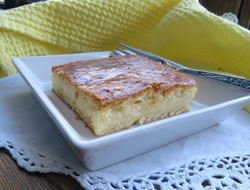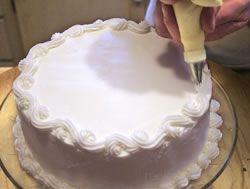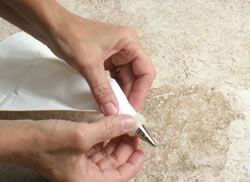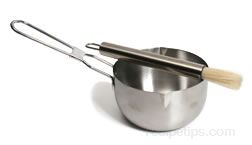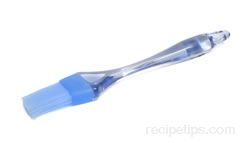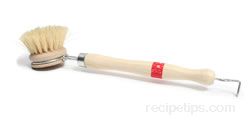To clean Basting and Pastry Brushes, use hot water and a cleaning detergent, washing and rinsing thorougly when cleaning. Some brushes will have openings where bristles connect to the handle or in areas around the brush and bristle connection where bacteria can begin to grow. In an effort to remove these open areas around the bristles, some brushes have bristles sealed with epoxy where the bristles are adjoined to the handle. To assist with keeping bacteria from developing in crevices and open areas where food can become trapped, soak and clean the brush in a water and bleach solution, using a pint of water with a half of cap full of bleach. Allow the brush to soak and be cleaned in this solution for almost a minute in order to attempt to remove and cleanse any impurities that may cause bacteria to form.
Loading
Basting or Pastry Brush
A small round or flat shaped brush made with nylon, silicone or sterilized natural bristles. This type of brush is used to apply glazes to breads, pastries, cookies, meats, and poultry before or after baking. Egg washes, marinades, juices from pans, and various food glazes are all applied using Basting or Pastry Brushes. The brush handles may be constructed of stainless steel, nylon or wood with varying lengths. If made of metal or nylon, it is important to make sure they will withstand high temperatures without either transferring the heat to the handle or affecting the structure of the handle. Longer handled brushes are used for grilling or in areas where the length of the handles helps to keep hands away from heat. The coarse hairs of the brush may be made of nylon, silicon or natural bristles, each having properties that affect the basting process. Nylon and silicone bristles are easy to clean and maintain, resulting in a brush that will not retain flavors. The bristles stay uniform in shape and the silicon bristles do not fall out over time. However, nylon and silicone bristles have a tendency to retain less of various sauces or marinades within the bristles as the solution is transferred to the food being prepared. Also, heat can easily damage the nylon bristles if they become too hot. Most silicone bristles are made to be heat resistant. Natural bristles may hold greater quantities of sauces or marinades as well as having more or less flex than nylon or silicone. However, most of the silicon bristle brushes are very flexible. The tendency to resist fraying or being affected by heat may also be an attribute, depending on the type of natural bristle used for the brush bristles.
USDA Nutrition Facts | ||||||||||||||||||||||||||||||||||||||
|
||||||||||||||||||||||||||||||||||||||
There currently aren't any reviews or comments for this term. Be the first!
Advertisement
Advertisement








